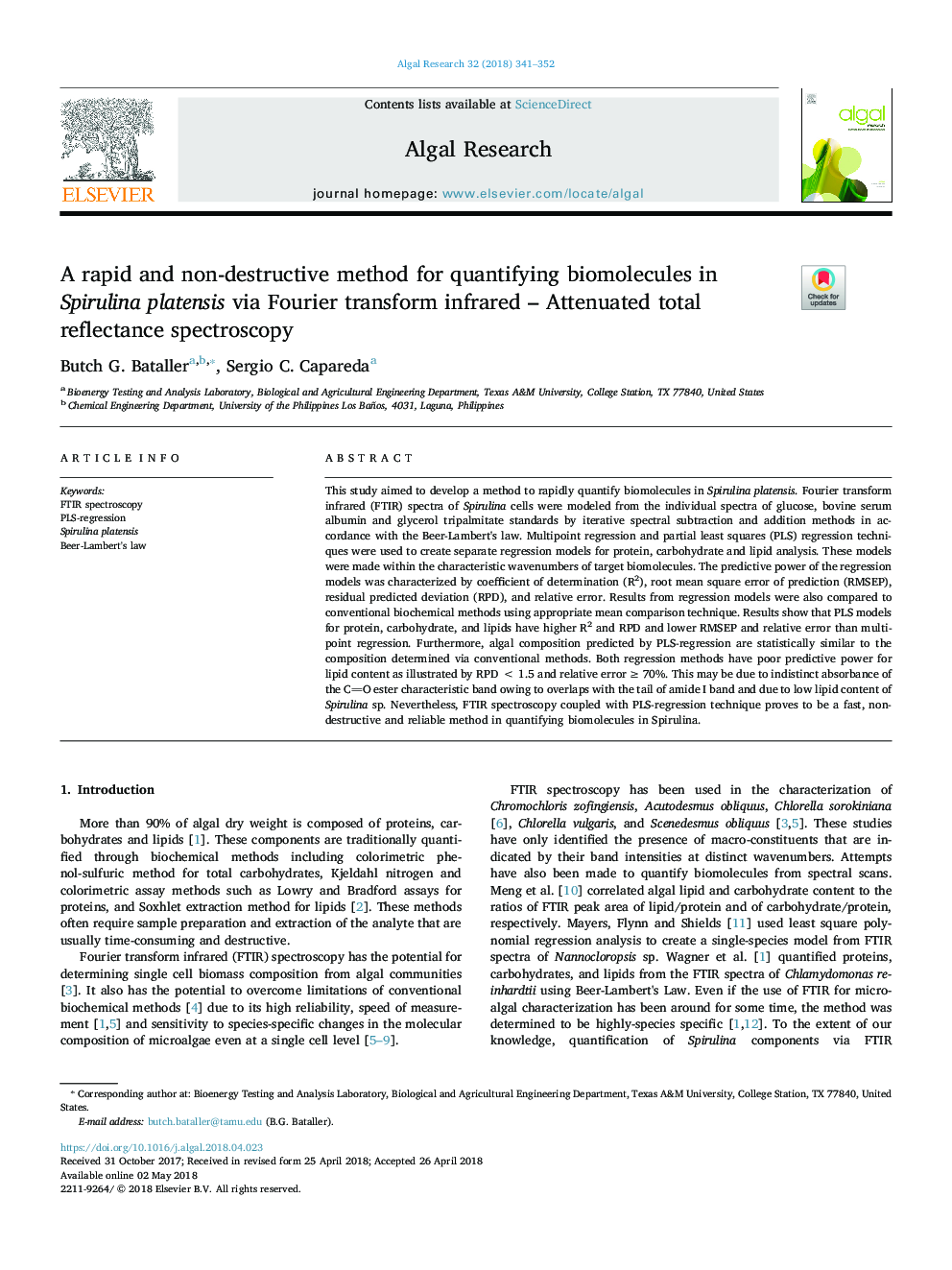| کد مقاله | کد نشریه | سال انتشار | مقاله انگلیسی | نسخه تمام متن |
|---|---|---|---|---|
| 8085895 | 1521801 | 2018 | 12 صفحه PDF | دانلود رایگان |
عنوان انگلیسی مقاله ISI
A rapid and non-destructive method for quantifying biomolecules in Spirulina platensis via Fourier transform infrared - Attenuated total reflectance spectroscopy
دانلود مقاله + سفارش ترجمه
دانلود مقاله ISI انگلیسی
رایگان برای ایرانیان
موضوعات مرتبط
مهندسی و علوم پایه
مهندسی انرژی
انرژی های تجدید پذیر، توسعه پایدار و محیط زیست
پیش نمایش صفحه اول مقاله

چکیده انگلیسی
This study aimed to develop a method to rapidly quantify biomolecules in Spirulina platensis. Fourier transform infrared (FTIR) spectra of Spirulina cells were modeled from the individual spectra of glucose, bovine serum albumin and glycerol tripalmitate standards by iterative spectral subtraction and addition methods in accordance with the Beer-Lambert's law. Multipoint regression and partial least squares (PLS) regression techniques were used to create separate regression models for protein, carbohydrate and lipid analysis. These models were made within the characteristic wavenumbers of target biomolecules. The predictive power of the regression models was characterized by coefficient of determination (R2), root mean square error of prediction (RMSEP), residual predicted deviation (RPD), and relative error. Results from regression models were also compared to conventional biochemical methods using appropriate mean comparison technique. Results show that PLS models for protein, carbohydrate, and lipids have higher R2 and RPD and lower RMSEP and relative error than multipoint regression. Furthermore, algal composition predicted by PLS-regression are statistically similar to the composition determined via conventional methods. Both regression methods have poor predictive power for lipid content as illustrated by RPDâ¯<â¯1.5 and relative errorâ¯â¥â¯70%. This may be due to indistinct absorbance of the CO ester characteristic band owing to overlaps with the tail of amide I band and due to low lipid content of Spirulina sp. Nevertheless, FTIR spectroscopy coupled with PLS-regression technique proves to be a fast, non-destructive and reliable method in quantifying biomolecules in Spirulina.
ناشر
Database: Elsevier - ScienceDirect (ساینس دایرکت)
Journal: Algal Research - Volume 32, June 2018, Pages 341-352
Journal: Algal Research - Volume 32, June 2018, Pages 341-352
نویسندگان
Butch G. Bataller, Sergio C. Capareda,